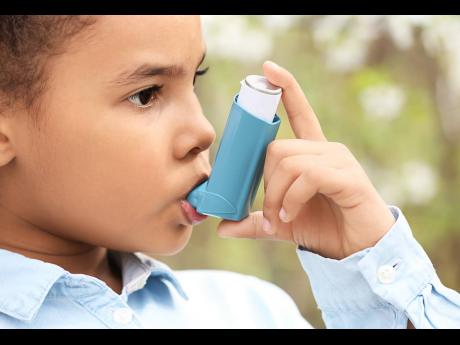Dr Amanda Daley and Tia Ferguson | Asthma in children
ASTHMA IS a long-term, chronic lung disease that causes your airways to become sensitive to certain triggers.
Several things happen to the airways when a child is exposed to triggers. For example, the lining of the airways swells, the muscles around the airways tighten, and the airways make more mucus than normal.
All of these things will cause the airways to narrow and this makes it difficult for air to go in and out of your child’s lungs, and leads to the symptoms of asthma.
The exact cause of asthma is not known. However, researchers think it is partially passed down through families, but it can also be caused by many other things such as the environment, infections and other exposures, like tobacco smoke.
According to Dr Amanda Daley, clinical pharmacist at the Drug Serv Pharmacy at the Bustamante Hospital for Children, a child is more likely to be diagnosed with asthma if he or she is age five to 17 years old, though for many, symptoms start sooner; has family members with asthma, has food allergies, eczema or nasal allergies, is around tobacco smoke, is around air pollution and has another health problem, such as being overweight.
“Symptoms can occur a bit differently in each child. Many children with asthma have times when they have few, if any symptoms. They also have times when symptoms flare up. The symptoms of asthma can be like other health conditions, so make sure your child sees his or her healthcare provider for a diagnosis,” Dr Daley said.
Symptoms of asthma in children may include cough – daytime, night-time or both; wheezing or whistling sound that is heard while your child is breathing, trouble breathing or shortness of breath while your child is active, and chest tightness.
According to Tia Ferguson, pharmacist at the Drug Serv Pharmacy at the Bustamante Hospital for Children, asthma is a clinical diagnosis. However, there are some tests that can be used to help support a diagnosis of asthma, depending on the age of the child and the clinical situation.
“Some of these tests may include a Spirometry, which is a device used to check lung function. It can typically be done starting around age five. There is also Peak flow monitoring, which is a peak flow meter used to measure the amount of air a child can blow out of the lungs. This measurement can be helpful in some, particularly older, children,” Ferguson said.
“Chest X-rays also utilises invisible energy beams to make images of internal tissues, bones and organs on film. This can help rule out other conditions that appear similar to asthma, but may appear normal if the child has asthma. Allergy tests also can help identify triggers for asthma, but are not themselves diagnostic of asthma,” Dr Daley added.
Treatment will depend on your child’s symptoms, age and general health. It will also depend on how severe the condition is and how well they are controlled. Treatment includes finding triggers and ways to avoid them. It will also include medicines.
“Medications for quick relief of symptoms include Bronchodilators (beta agonists) among others. These medicines are used for quick relief to help open the narrowed airways. They help relieve coughing, wheezing, shortness of breath or difficulty breathing. The most commonly used asthma medication, albuterol, is a bronchodilator,” Dr Daley said.
Asthma cannot be completely prevented. However, there are steps you can take to reduce the chance of your child developing asthma. They include avoiding second-hand smoke, avoiding air pollution. In most children, asthma flare-ups can be prevented by avoiding known triggers, carefully managing symptoms and taking medicines as instructed
Dr Amanda Daley and Tia Ferguson were presenters on the National Health Fund’s Instagram Live Programme: Ask Your Pharmacist held recently. keisha.hill@gleanerjm.com
SOURCE: National Health Fund, John Hopkins Medicine

